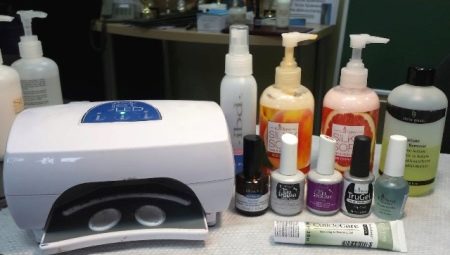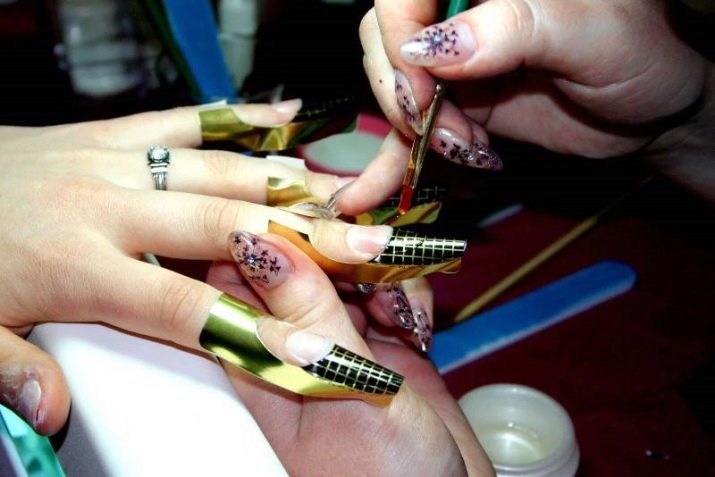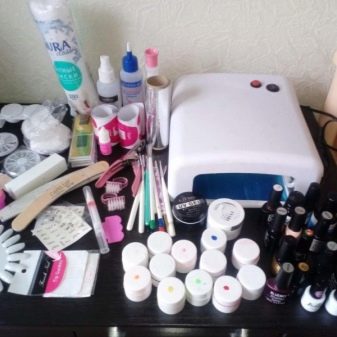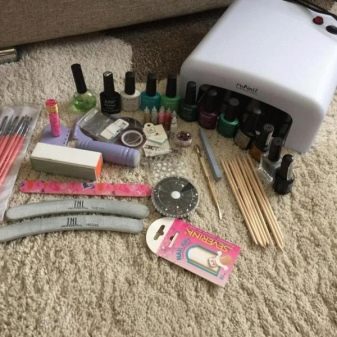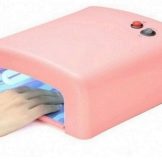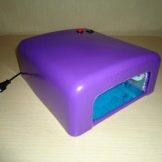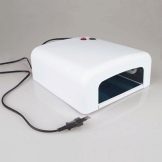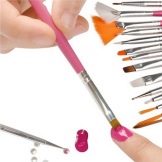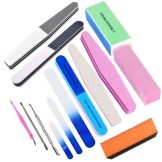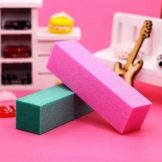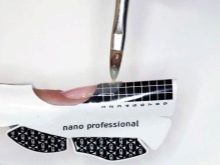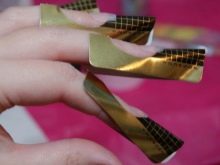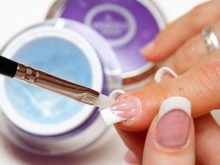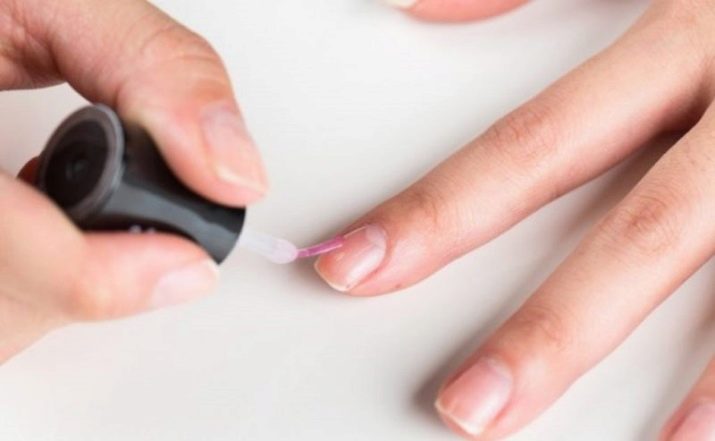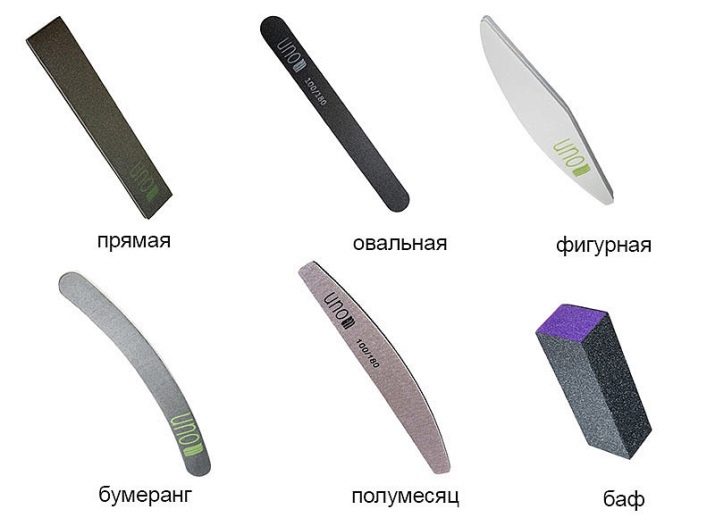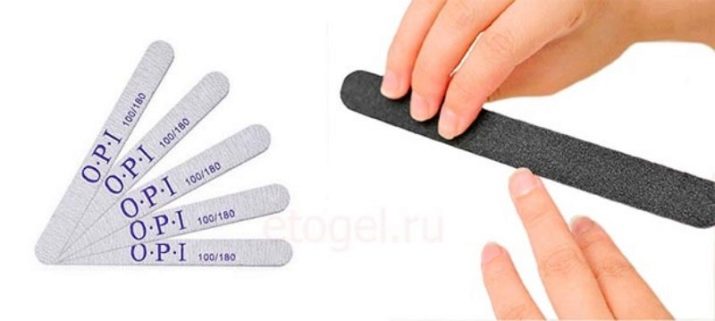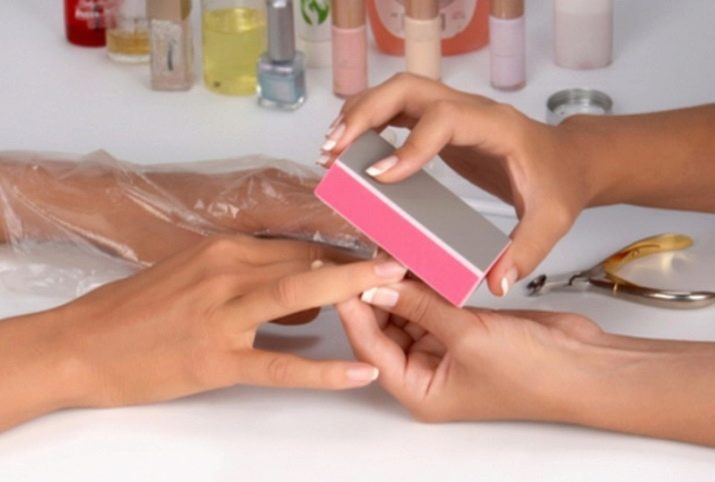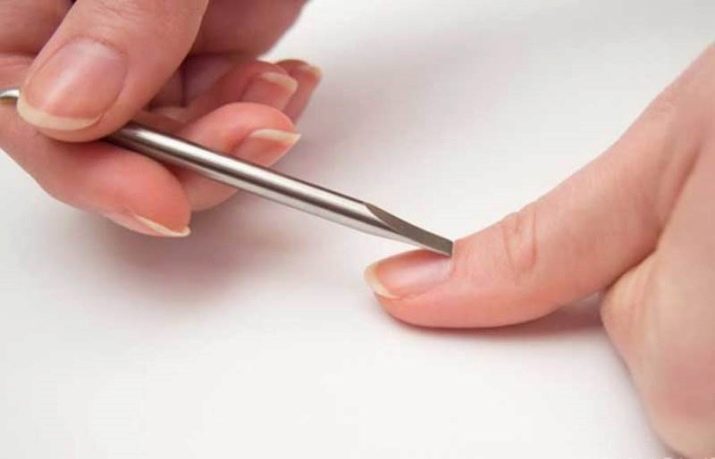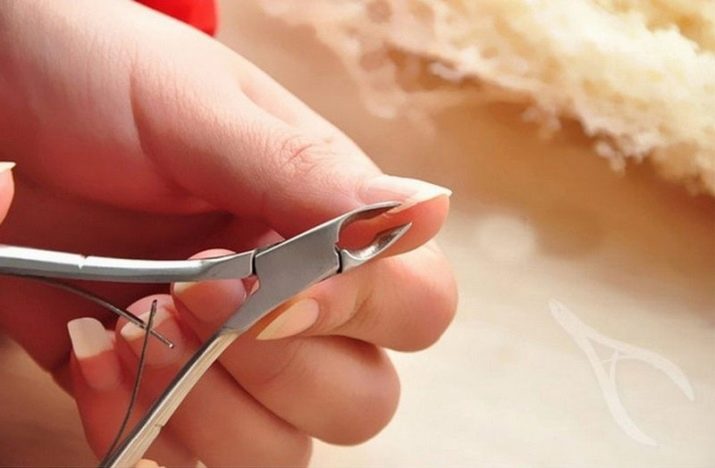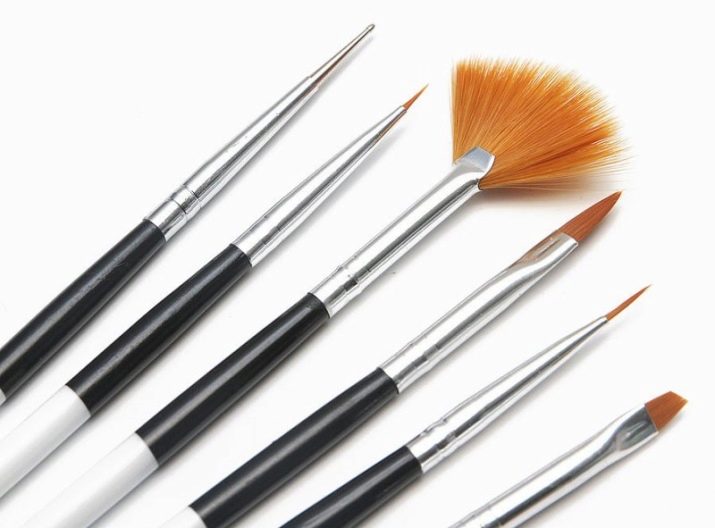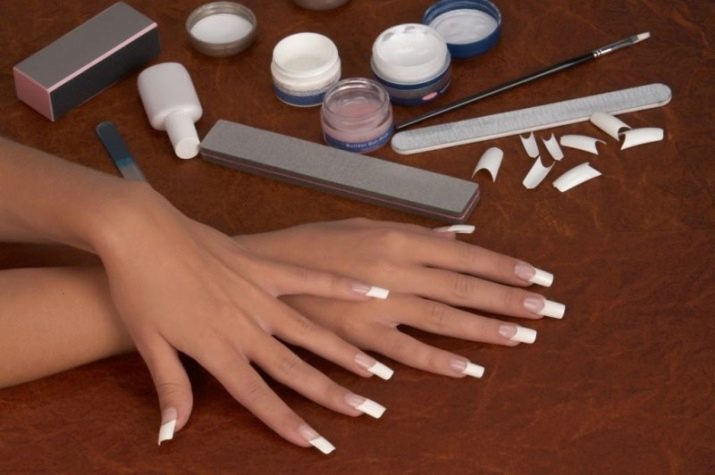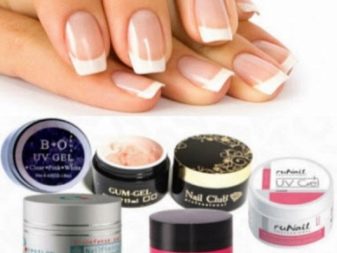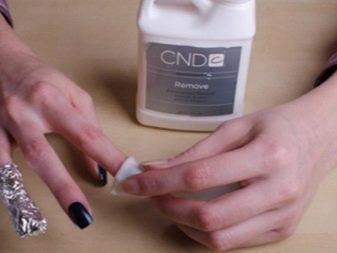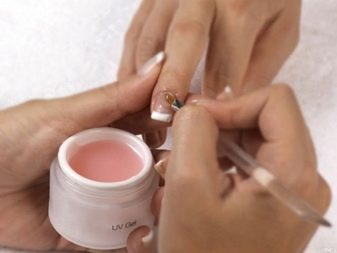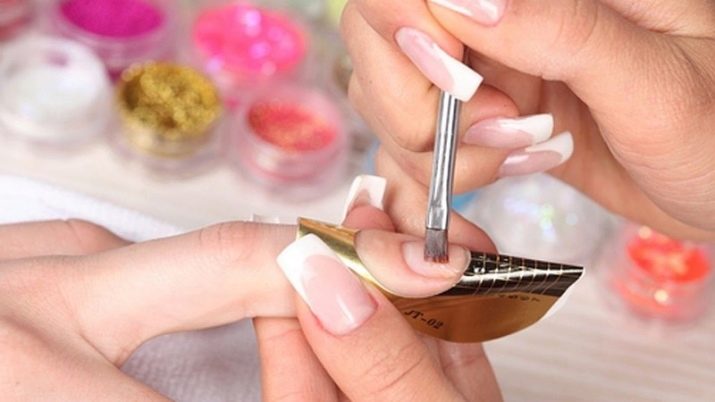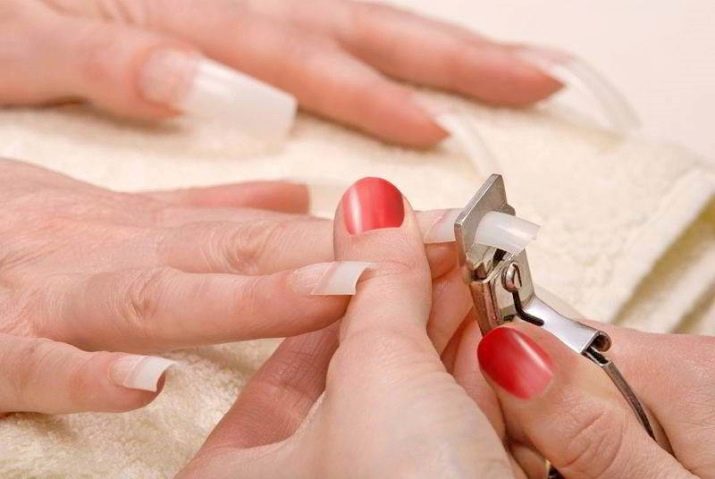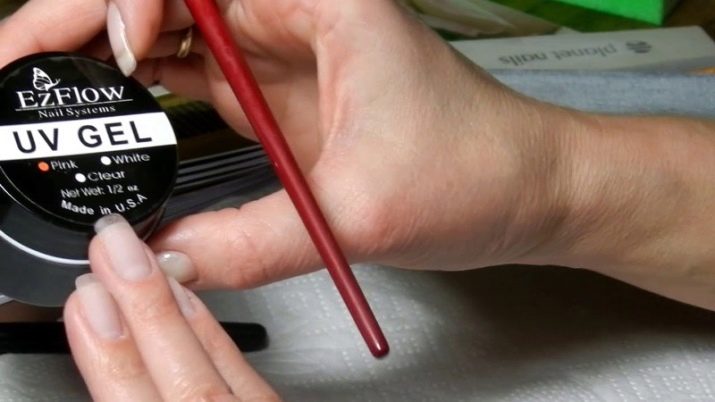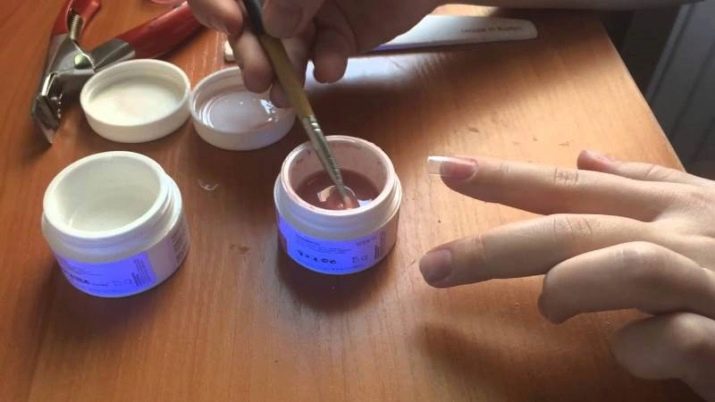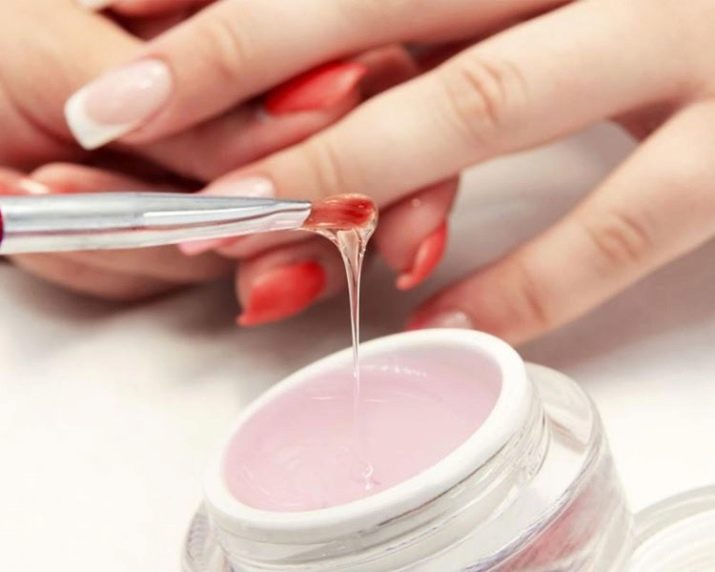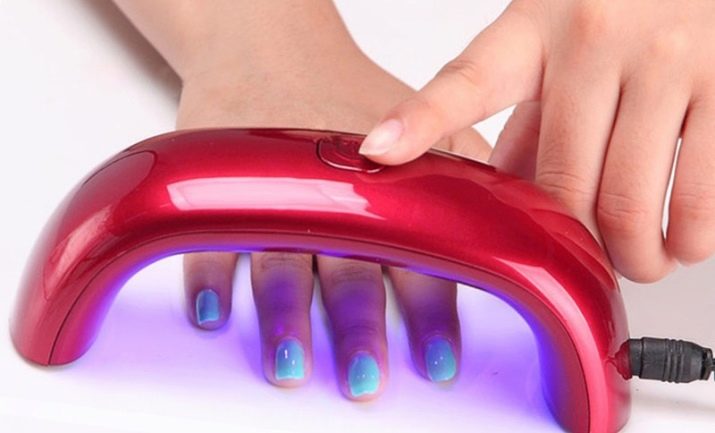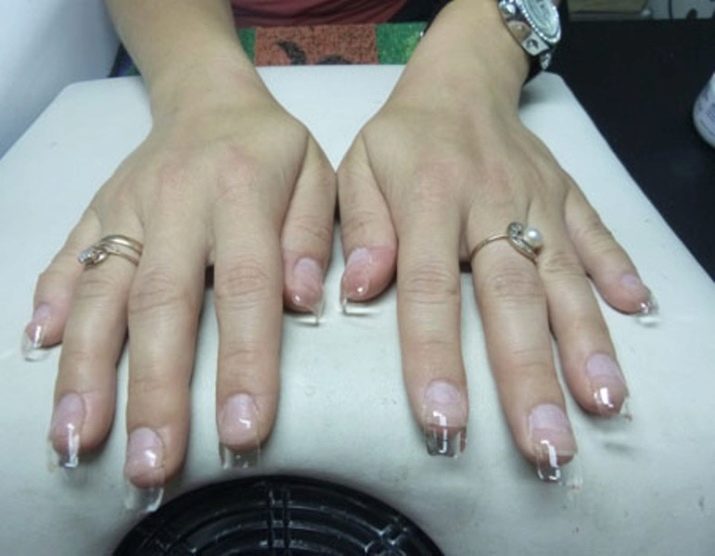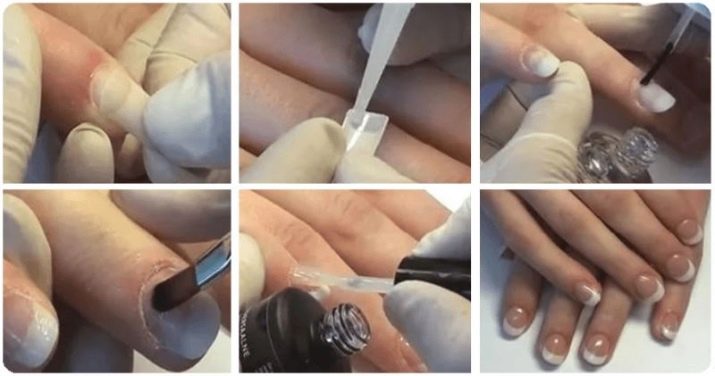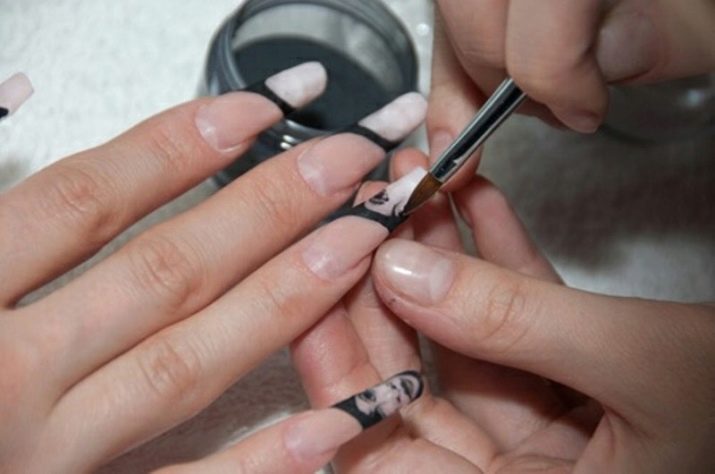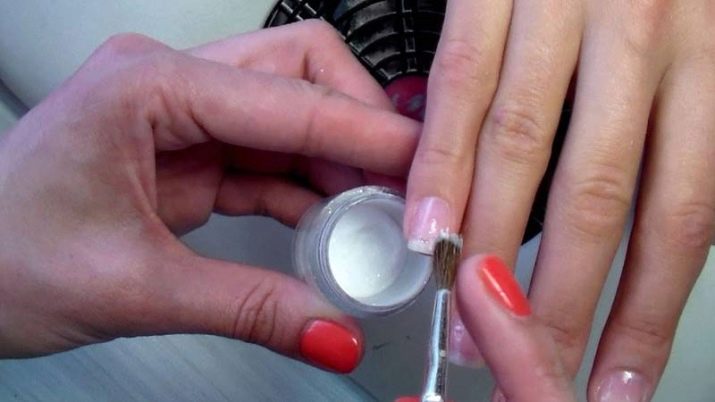Many women dream of long and beautiful nails, however, not every girl can quickly grow them. That is why they come to the aid of nail extension, which at any time can be done in the salon or at home.
Necessary equipment
In order to increase the nails requires a set of tools and supplies for all the necessary work. One of the most important accessories for this procedure is a UV lamp. The purchase of this device should be approached with particular care, since the speed and quality of the polymerization of the nail cover and comfort during the procedures depend on its power and efficiency. The lamp can be used when working with shellac and acrylic, in addition, it is often used to dry the gel coating.
If you are only taking the first steps in manicure, then you can purchase the most primitive unit without any additional options, although the power of the device should be high: at least 24 W, and best of all - 36 W. Such a device will be the most impressive item of expenditure, however, the matter of that, no doubt, is worth it, because without a lamp it is quite difficult to make a high-quality capacity.
But if you plan to earn a manicure, then you should look at the models, supplemented by functions of blowing, touch screen, as well as a timer and other "excesses." They make the procedure of using this lamp comfortable, however, such equipment is expensive, so if you only need the lamp for personal needs, then you are unlikely to be able to recoup such an investment.
We will make a reservation in advance that substituting under the ultraviolet marigolds covered with the most common decorative varnish does not make any sense, since the UV lamp does not dry, but only polymerizes. It does not affect the coating of high temperatures - that is, you do not reduce the time of drying, but you risk to get color turbidity.
In addition to the lamp, many other tools are needed;
- a set of nail files;
- buffs;
- stiff hair brushes for stylish styling;
- pusher
The list of materials looks like this:
- base gel colorless;
- special modeling composition;
- fixing coating.
In addition, you will need a primer, as well as a dehydrator and bonder. Most inexperienced masters believe that this is the same thing, however, this is far from true. The primer is necessary for degreasing, removing the tiniest particles of dirt and preparing the surface of the nail for adhesion due to a slight lifting of scales. The dehydrator removes excess moisture, improving the adhesion strength, and Bonder is an effective binding component, due to which the gel fits well on the nail and strengthens on it, so that the accumulated elements do not fall off from the first mechanical effect.
And, of course, no buildup is complete without nail glue. Let us dwell on the most important materials and features of their choice.
- Nail files - used to give the marigold the desired shape, and, in addition, for grinding the entire surface and sealing the tip of the plate. In previous years, often used metal fixtures - today this technique is recognized as ineffective, because it leads to delamination of nail plates.Experts recommend using products made of ceramics or glass. For a good manicure, it is desirable to take a few nail files with different levels of abrasiveness, which is calculated in the grids - the lower this value, the rougher the coating of the file.
Apply files with parameters 80/120 grit to work with artificial coverings, and own natural files file with a tool with an indicator of 240 grit and more. As for the appearance, it is desirable to use elongated nail files to give the desired shape to the nail, for grinding the nail near the cuticle, you should prefer products in the form of a boomerang, and for polishing the surface a rectangular file is suitable.
If you intend to do a manicure regularly, it makes sense to immediately get a large number of files of different roughness, because they soon become unusable and need to be constantly changed.
Separately, you should buy a file-buff, which is used to polish natural nails, such processing is necessarily carried out before building it up, therefore the tool is categorized as necessary. Baf - a piece of four-sided foam rubber, and each surface has its own degree of abrasiveness. This consumables effective for contact with natural marigold, and artificial.
- Pusher or scraper It is necessary in order to move away the coarsened cuticle and prepare the marigolds for the gel coating. For an effective manicure it is best to take a metal device with an ergonomic corrugated handle. Usually one pusher tip is made in the shape of a spatula, and the second resembles a sharp arrowhead. If you bought a scraper, here one of the planes is in the shape of a hatchet.
- Tweezers or nippers - These tools are required for cutting the cuticle and getting rid of painful burrs, as well as the corners of the protruding nail plates. This tool usually has a well-honed surface and is considered much more effective than nail scissors with rounded tips or a trimmer.
- To build and decorate the nails must be purchased brush set: some must have a straight synthetic bristle, others must be thinner, and you also need a brush with a narrow tip.
- In building, many masters use tips, in this case, you need to purchase tip cutter, with which you can simulate the edge of the free edge.
- After adjustment and grinding Of polymerized shellac, dust often appears; it must be removed from the surface of the nail - this is done with a nail brush with a special synthetic bristle.
All of the above tools are required when building in any technique regardless of what exactly you work with - tips, gel or acrylic. And now we will dwell in more detail on the specialized consumable compositions that are required for each type of building taken separately.
For building gel
The gel is considered the easiest to use polymer, which is most suitable for inexperienced masters. It has a lot of advantages: it does not emit harmful substances and does not have a chemical pungent odor, which is why the material stably holds the palm among all other types of coating. To work with the gel must be prepared:
- Base gel - for beginners it is best to purchase a single-phase composition, which does not create any difficulties in the application, but it makes sense for more experienced masters to dwell on two or three phases
- camouflage gel - usually white, beige or pink;
- topcoat - it is necessary to give shine and evenness to the nail plate;
- concealer for degreasing a sticky layer;
- shellac remover.
In addition to the above materials, you need a special moisturizer for cuticle: it softens the keratinized layers of the epidermis and prevents the appearance of burrs. Also you will need discs made of cotton, napkins, lint-free, acrylic-based paints for the decoration of the nail, and also shine, glitter, rhinestones and other interesting trivia.
When using acrylic
When using acrylic, you will need a different set of consumables:
- monomer - special acrylic liquid;
- acrylic powder - the composition of a transparent, pink or peach color;
- means for dissolving acrylic, which is required in the case when the work requires a small adjustment.
In addition, you will certainly need a container where you will connect the acrylic liquid with powder and clothespins with clips.
On the form
Nail extension using the form is considered to be a more complicated way than a manicure using tips. However, using the highest quality materials and the availability of professional skills to get a good result is not so difficult. For such an expansion, special forms are needed first. They are single and reusable: the first are made of paper and have a relatively low cost, and the second is made of teflon on a wire frame.
It is imperative to stock up with manicure wipes: they are thin cuts of lint-free matter, which remove the adhesive layer well and remove the remnants of decorative varnish.
Features of the procedure and possible problems
Now that you have acquired all the necessary tools and supplies for the job, you can proceed directly to nails. The easiest way to use the technique based on the gel composition, in this case, you can easily eliminate all visual defects of the nail. Build-up surfaces have a lot of advantages: they do not stratify, do not crack and do not break. Artificial coatings are extremely durable, so they rarely appear chips.
The use of artificial nail plates gives the nails the desired smoothness and allows you to successfully confront such serious problems as relief and uneven coverage. It should be noted that the ancient Chinese were engaged in nail extension technology, a little later the technique was improved and spread throughout European countries. Acryl was used for such a procedure for a long time, but today the use of a gel is considered a more modern and effective technology. Due to its high elasticity, marigolds are very strong, but thin. The flickering of the gel completely imitates the natural color and structure of the nails, thanks to which artificial coatings look very natural.
The use of gel formulations for nail has a lot of advantages:
- the whole procedure lasts no more than 2 hours;
- the coating on the exit is very durable and strong;
- due to the high elasticity of the drug the nails have a rather long term of wearing
- gel nail correction takes about half an hour;
- the prices for such a build-up are much more democratic than the cost of similar works with other compositions;
- when applying the gel the nail plate does not collapse, moreover, the nails become stronger, which allows them to grow quickly without the danger of fragility and delamination;
- When applying the gel, all cracks and ugly reliefs on the surface of the nail are filled with preparations;
- funds on the basis of gel give the nails a pleasant shine;
- gel nails are very easily removed;
- the material is able to pass oxygen, so the native nail plate does not dry out;
- the use of the gel effectively protects the nails from the dangerous effects of ultraviolet radiation, as well as household chemicals and various kinds of mechanical damage;
- gel is a hypoallergenic material, in its structure includes needle resin, which has pronounced fungicidal properties and helps prevent fungal diseases;
- and, of course, on the gel you can easily draw a wide variety of decors and drawings of varying degrees of complexity.
However, it was not without its minuses. So, during the polymerization under the UV lamp sometimes there is a painful burning sensation, and if the nail breaks, then its repair is impossible, a complete replacement of the coating will be required. To remove the gel nails can only master, do it yourself, without damaging the native plate, it is quite difficult, because you need to cut them, and with little experience in this case can be caused damage to their nails.
Also, with sharp fluctuations in temperature gel coatings can be deformed. However, all these shortcomings are more than offset by the experience and professional skills of the master and the observance of the rules of caring for nails. Step by step nail extension is carried out as follows.
- The regrown edge of the nail plate is corrected by a nail file so that a length of about 2 mm remains.
- The keratin layer is carefully processed with a buff until complete removal.
- Next, degreasing is carried out and primer is applied.
- Gel material is applied with a thin layer, and then polymerized in a UV lamp.
- A template is installed on the cover, it is very important to put it on correctly; on the border between the nail and the form, a thin gel substrate is made, then it is processed in the lamp, and the adhesive layer is removed.
It is very important to distribute the drug on the surface of the nail so that its main part falls on the middle, and at the edges of the coating remains thin.
- After drying, a smile filed a line and a base is applied.
- Templates must be removed and put makeup.
If the nails are enlarged using tips, then the technology looks a little different: a feature here is that tips are not removed at the end of the procedure, they need to be glued to the nail plate. This technology is considered to be universal, tips are often used even on damaged nails, but working with them is rather difficult, because artificial nails should ideally coincide with real ones, otherwise the coating will cling to everything. And the look will be untidy and unaesthetic.
When building nails at home you need to follow a few basic recommendations:
- the top layer of the nail plate is cut with a buff until such time as the nail acquires a matte shade;
- during the work, you should constantly inspect the nails from different angles in order not to leave even the smallest transitions and steps unnoticed and untreated;
- after the entire keratin layer is cut, the resulting nail dust is removed with a brush, otherwise the coating will be inaccurate;
- The time of hardening of the preparations in the lamp varies depending on the chemical composition and the manufacturer, therefore, before work, be sure to read the instructions for them.
Tips for choosing
Unfortunately, women rarely can boast strong and healthy nails. Professional etiquette, a huge amount of domestic responsibilities and the need to care for children becomes an obstacle to growing nail platinum, so building up becomes for them a real salvation. Modern technologies allow ladies to choose the type of extension that will be optimal in each particular case.
The cheapest option is fake nails., cope with this technique can even master amateur without any special skills. However, this option is unreliable and unaesthetic, such nails are sold with large tape sets and include plates of different shapes, widths and lengths, but even a large selection does not always allow you to choose nails that will perfectly fit the dimensions of the nail plate.As a result, they look very artificial.
To build a house also requires nail glue.
Another form of finished nails is tips. They differ from the overhead in that they are the basis for further modeling and are not attached to the entire nail plate, but only to its edge. Tips are made from more reliable material and are characterized by the necessary flexibility. Nails with tips look more natural than overhead. The most modern method of building is considered modeling, it is produced using materials such as gel, acrylic or biogel. The simulated marigolds look exceptionally natural, while the coating is more durable and durable.
Nails can be increased using acrylic compositions, this material is characterized by strength, and in addition, it has a relatively democratic value. For acrylic, elasticity is unusual, so correction has to be done quite often. In addition, acrylic smells unpleasantly and this smell accompanies you not only at the time of the build-up, but also for several days after it.
Gel preparations are considered safer, they are more plastic than acrylictherefore, gel nails have a longer period of wear. Such an extension is, of course, more expensive, but adjustments will have to be done much less often. The most modern version of the simulation is considered to be a biogel based technique - a substance that combines both acrylic and gel, so that the nails are strong and beautiful. The combination of these materials makes the nails much more robust and at the same time elastic, such a procedure will be rather expensive, but the result is certainly worth it.
The fact that you need to nail, see the following video.
